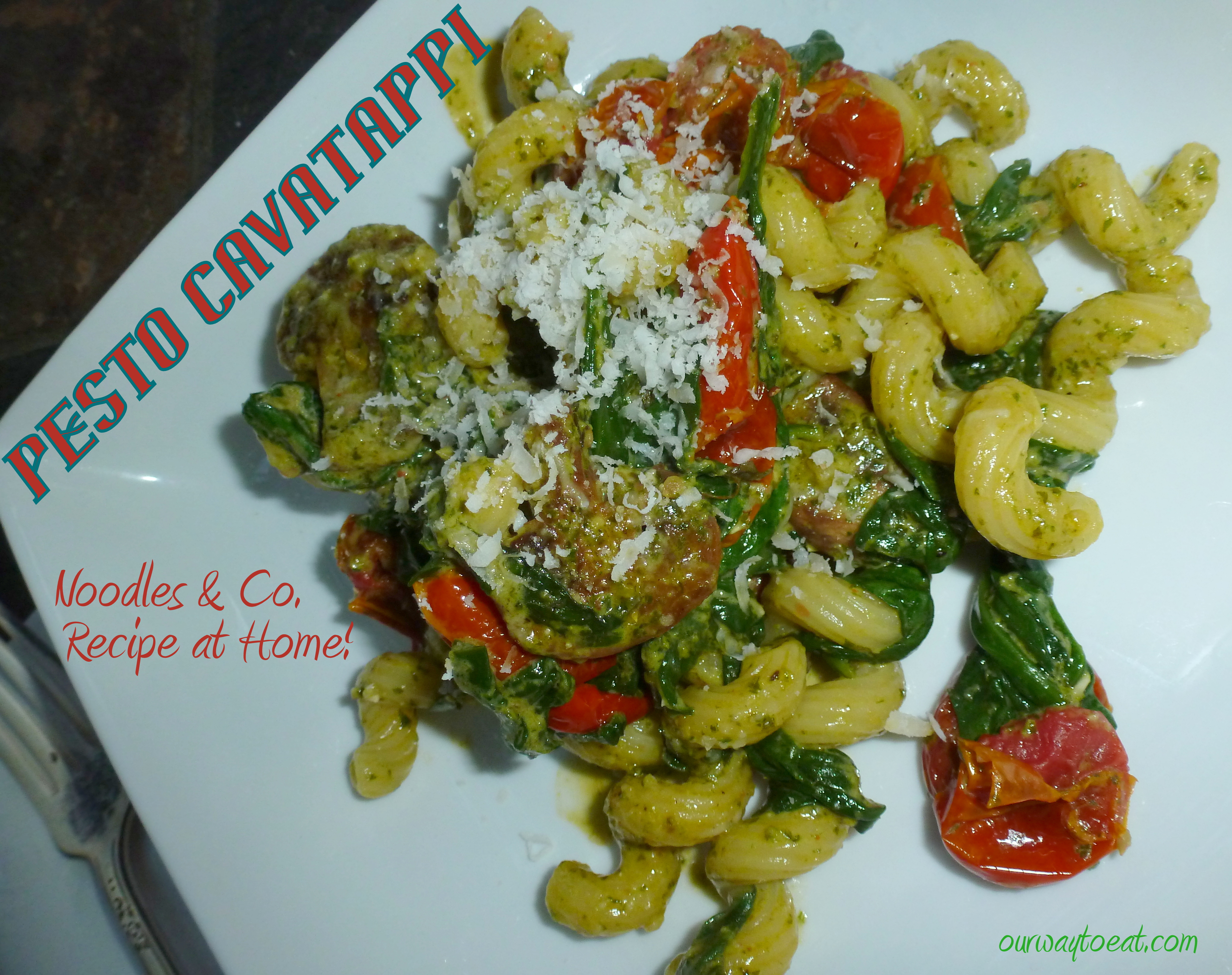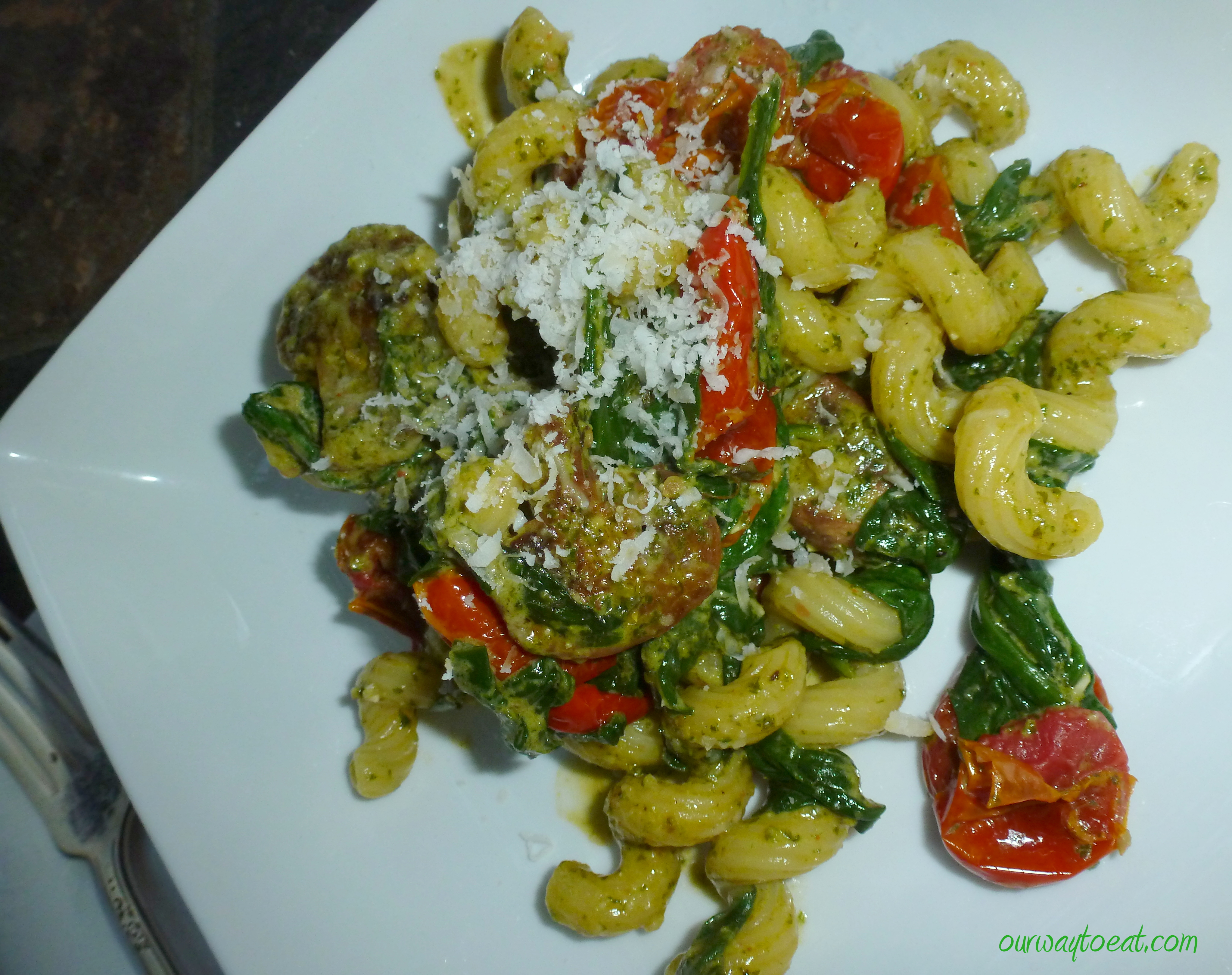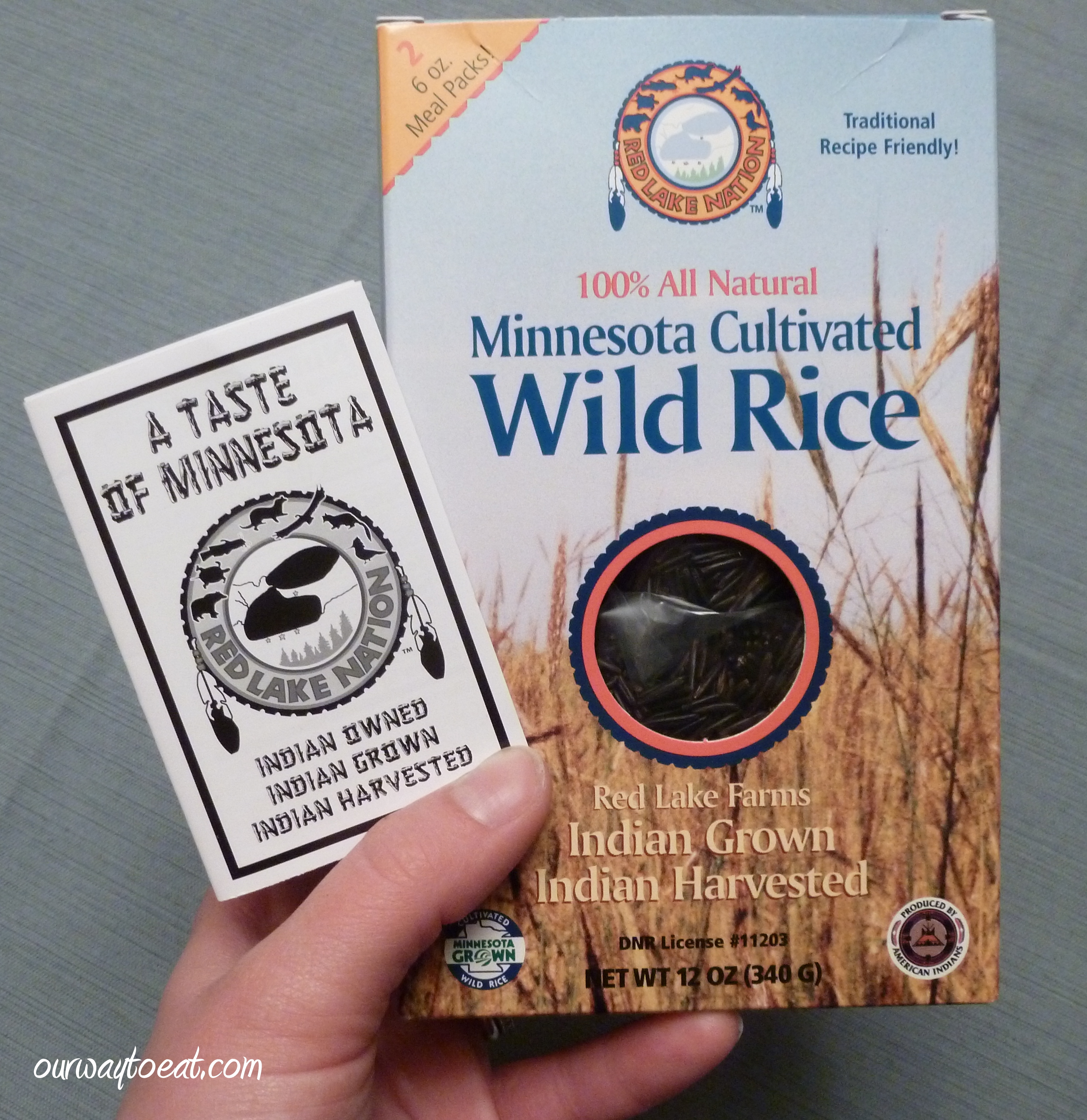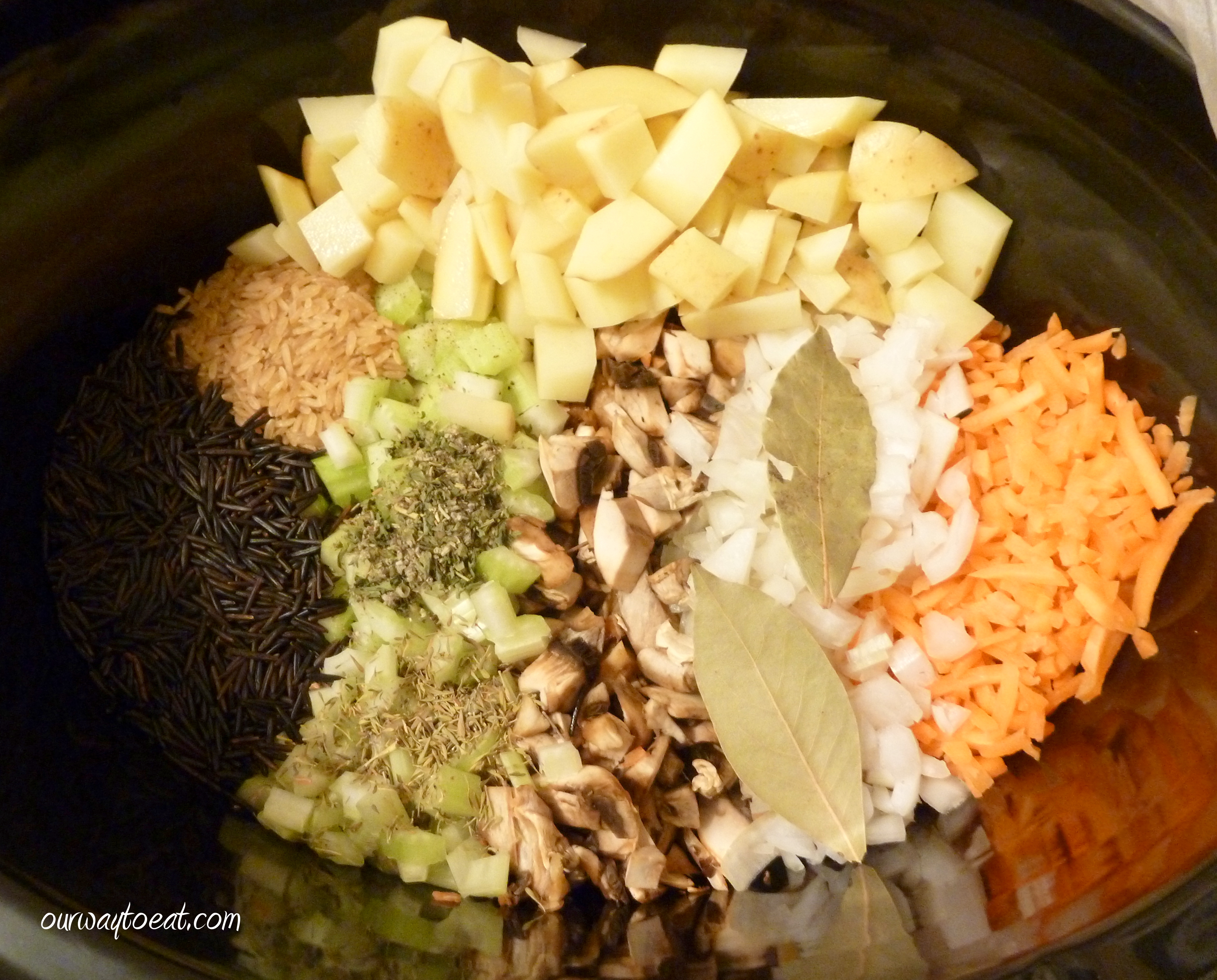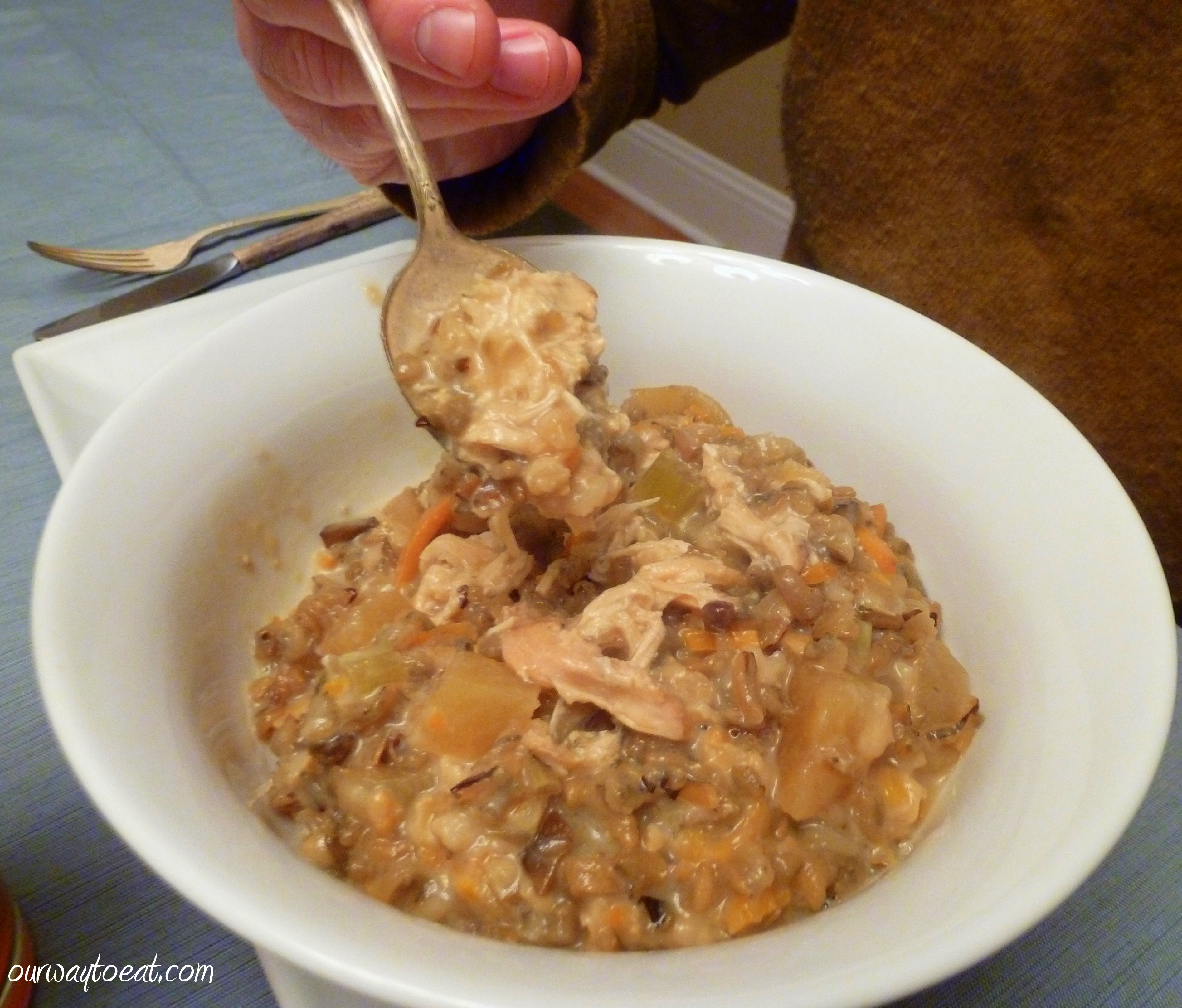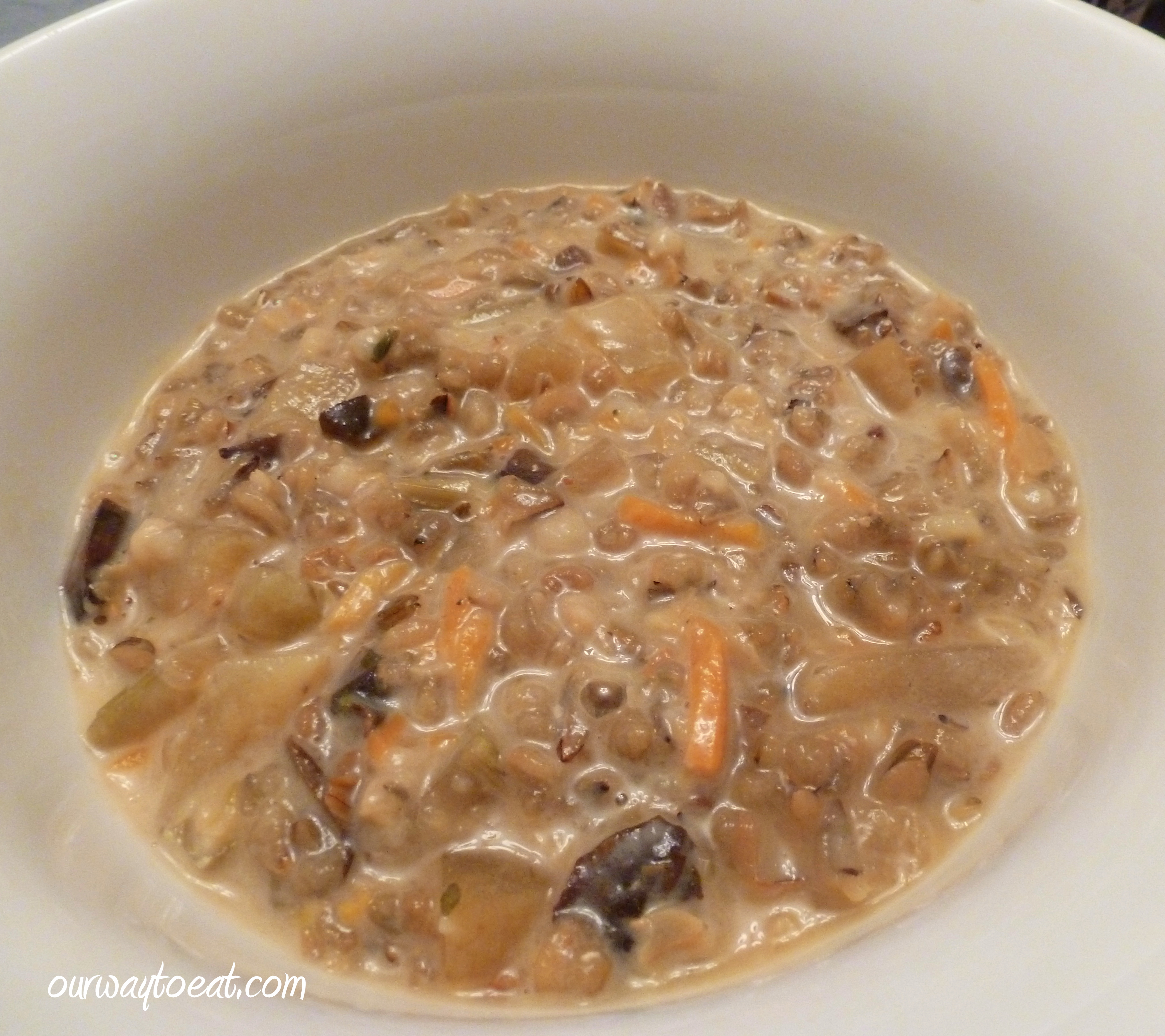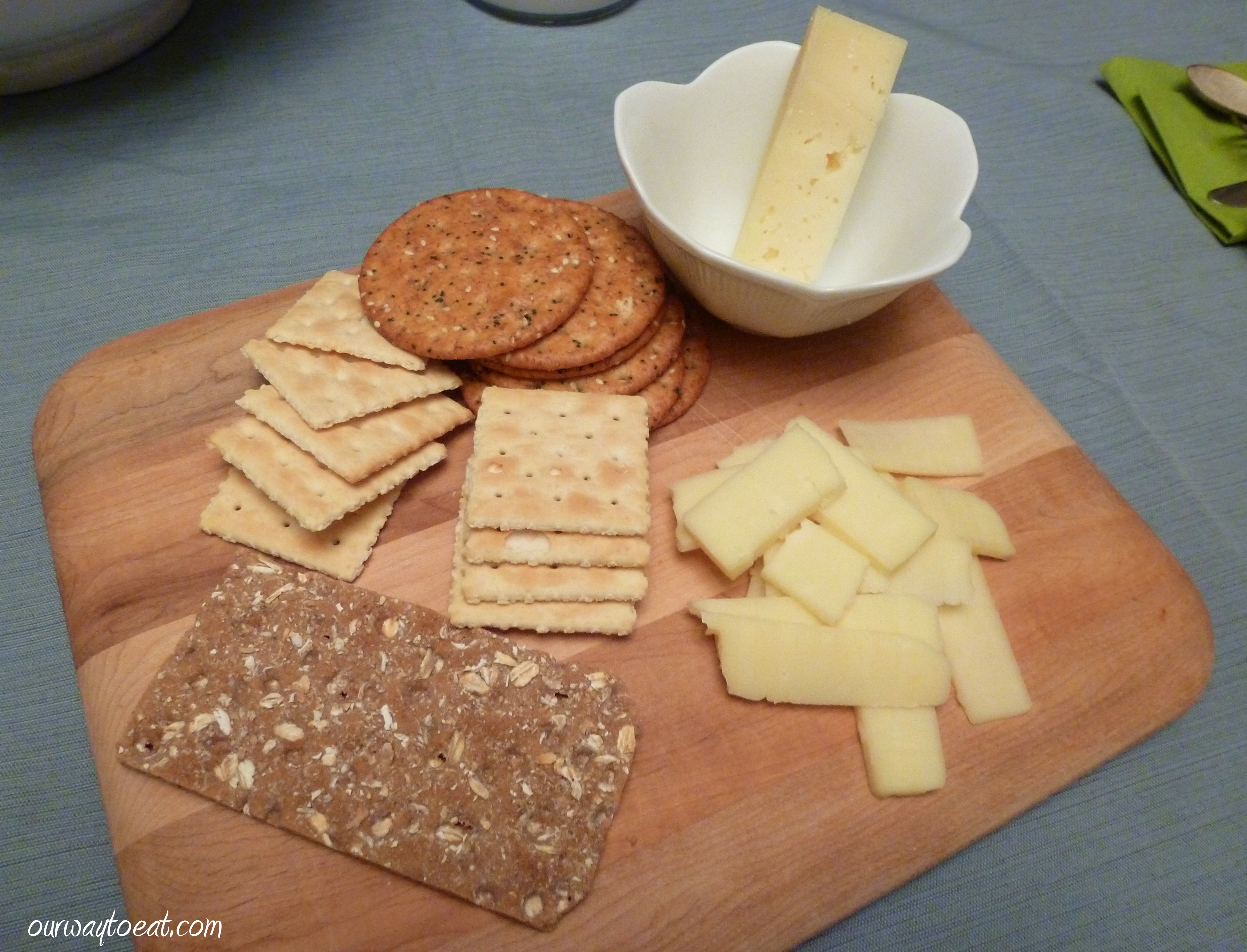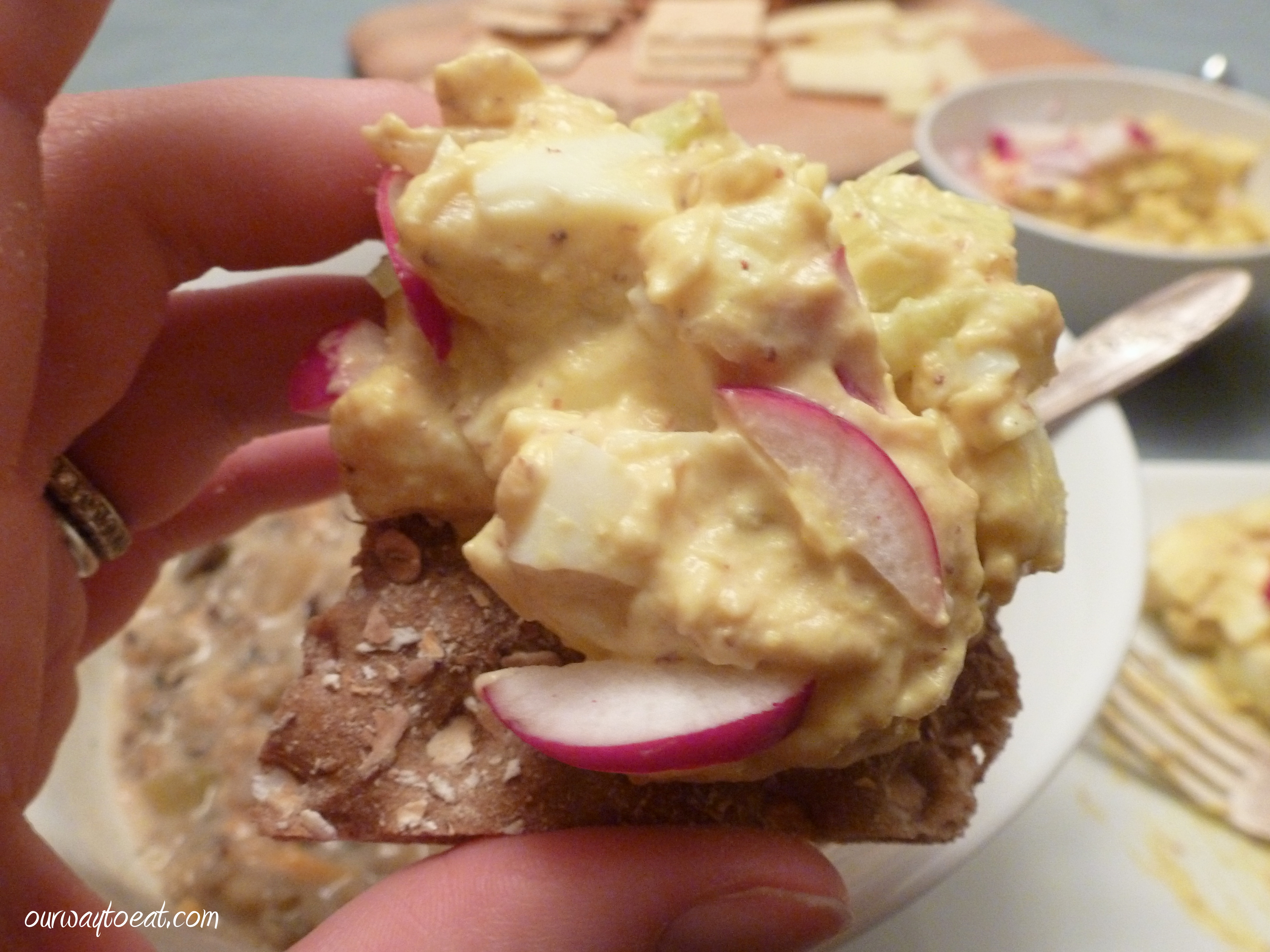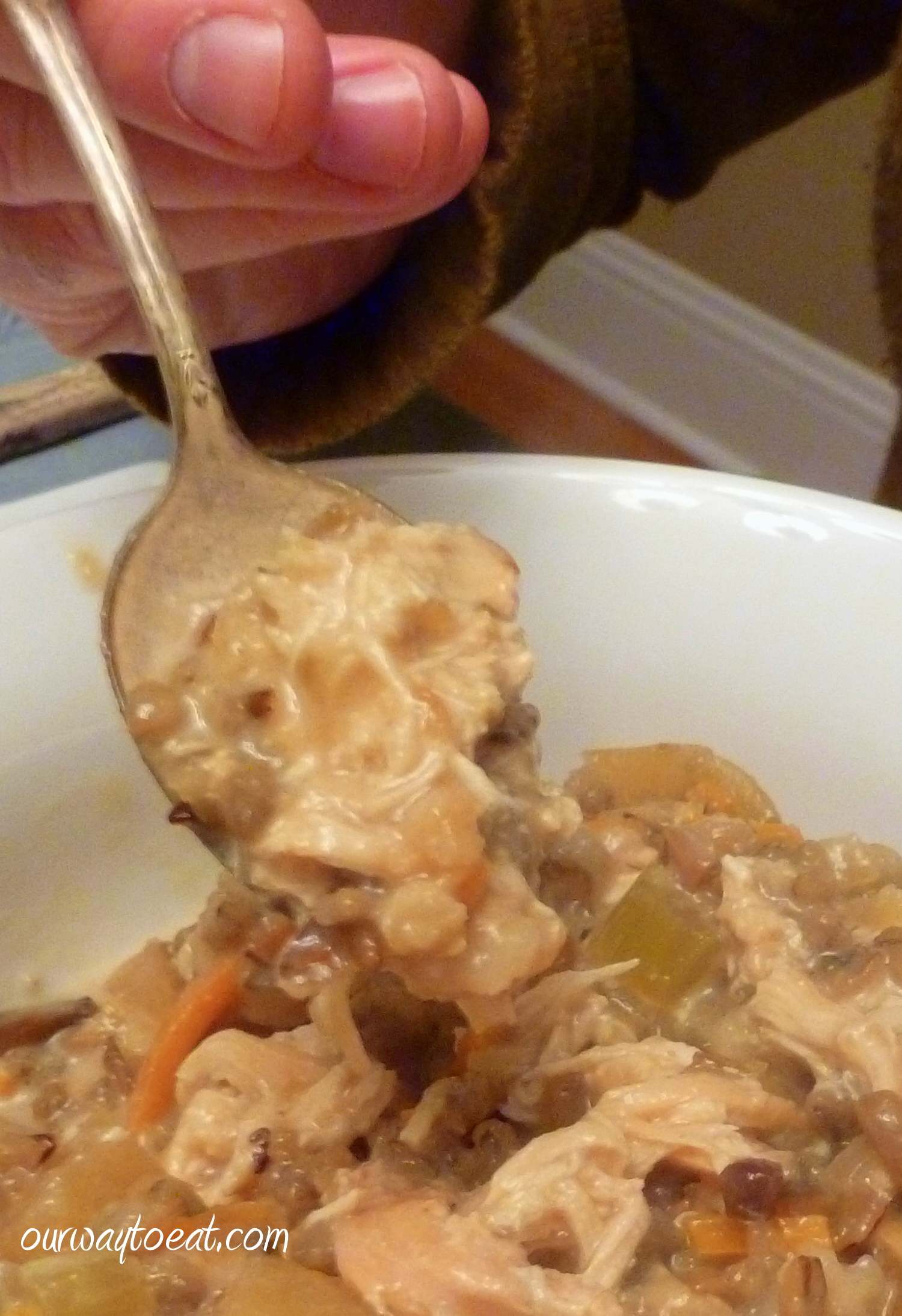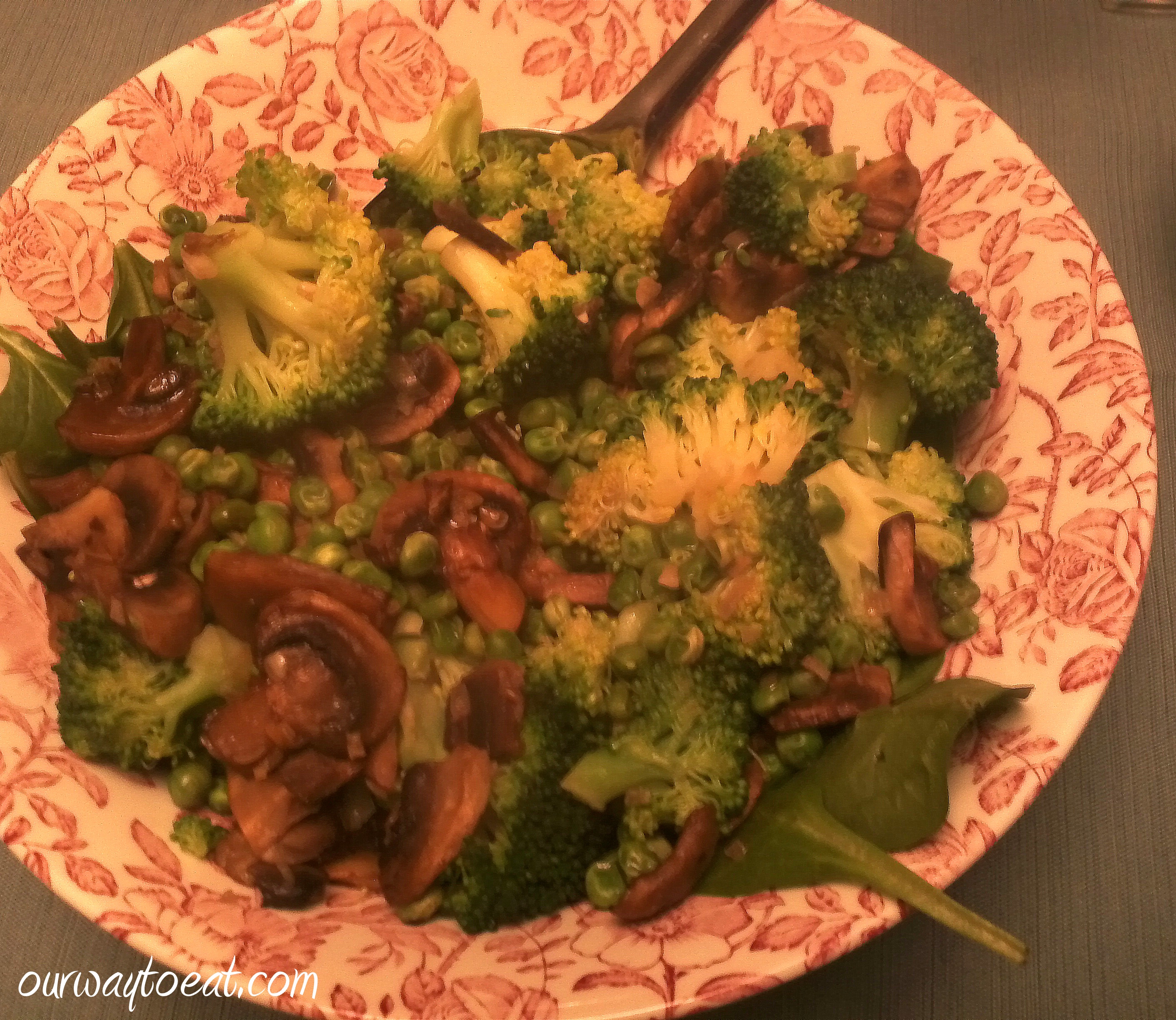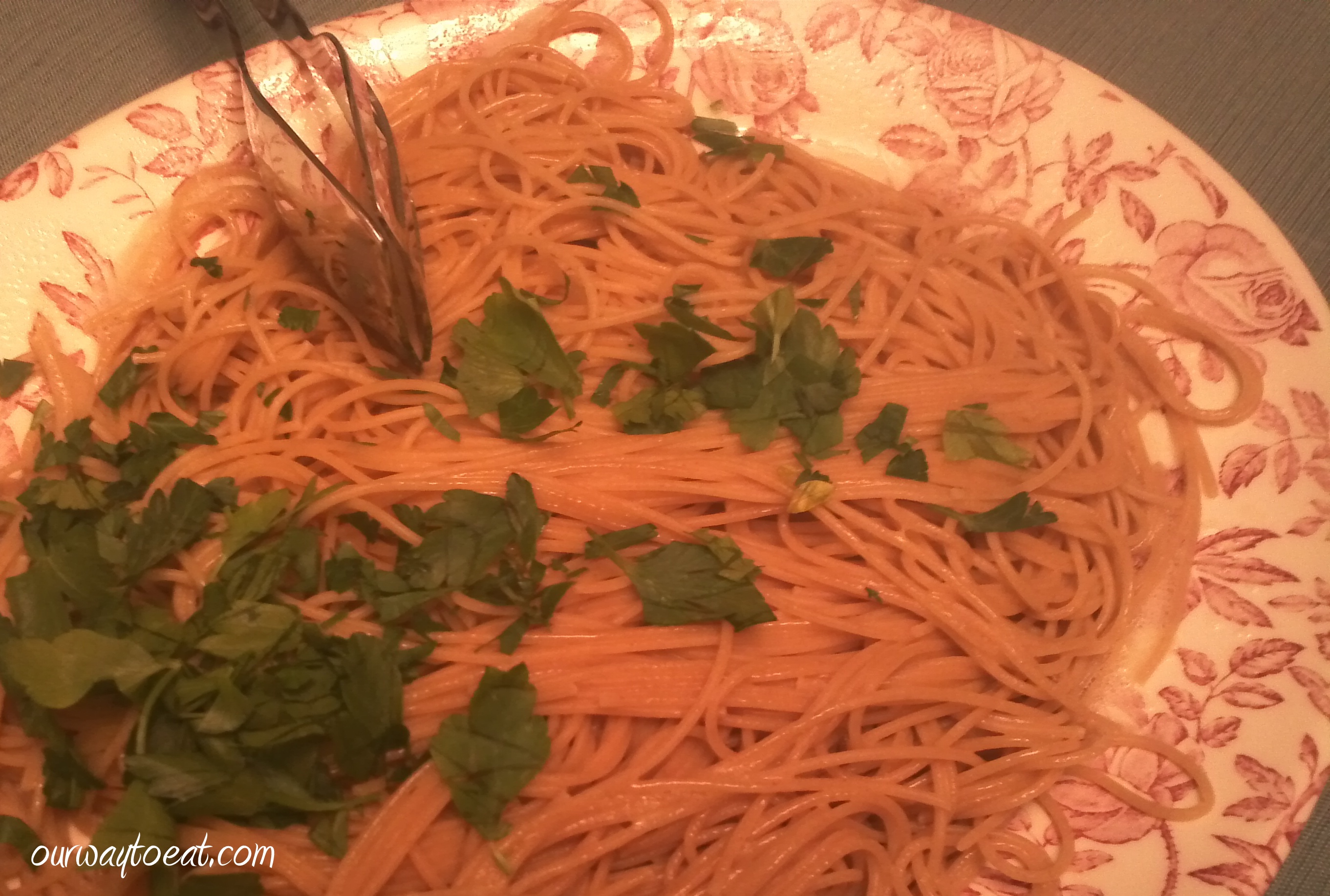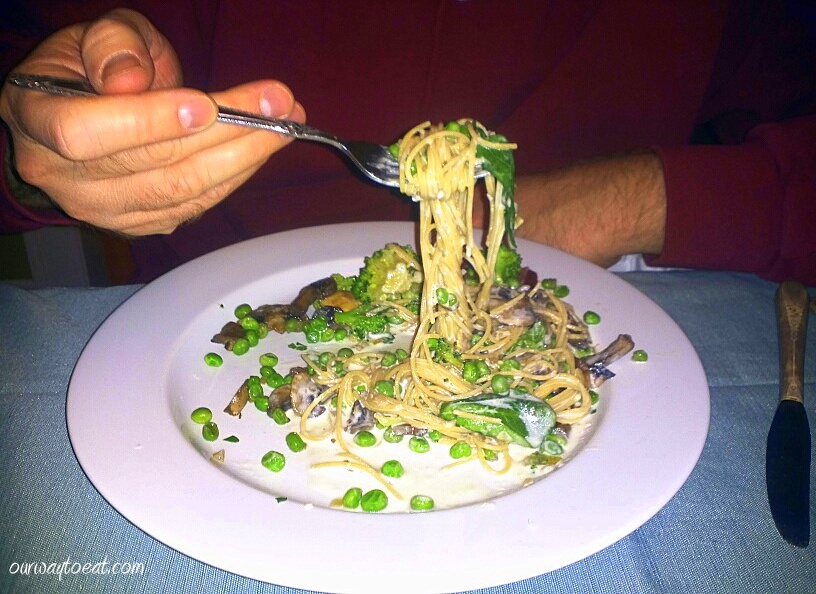I’m crazy about growing-my-own-everything in my backyard and making bread, pasta, cheese and beer from scratch. I follow approximately 40 food blogs [and counting…], I’ve spoken to Anthony Bordain* and I’ve introduced myself to Andrew Zimmern. Cookbooks by Brenda Langton, Sophie Dahl and Ina Garden frequently show up on my cookbook stand. Even so, this post could do away with any possibility of earning recipe-developer cred or gaining respect as a highfalutin foodie. I’m sharing a recipe that is based on my favorite dish at Noodles and Company. Noodles and Co.?! Yes. So what? I did my best rendition of Noodles and Company Pesto Cavatappi and it was totally delish.
To make this dish, I started by roasting tomatoes and making a batch of basil pesto. These are two steps that you can complete in advance since you can store both pesto and roasted tomatoes covered in olive oil in the fridge for a few days for use in multiple dishes. If you roasted a bunch of tomatoes based on the recipe I posted last week, this dish is an excellent way to use the leftovers. 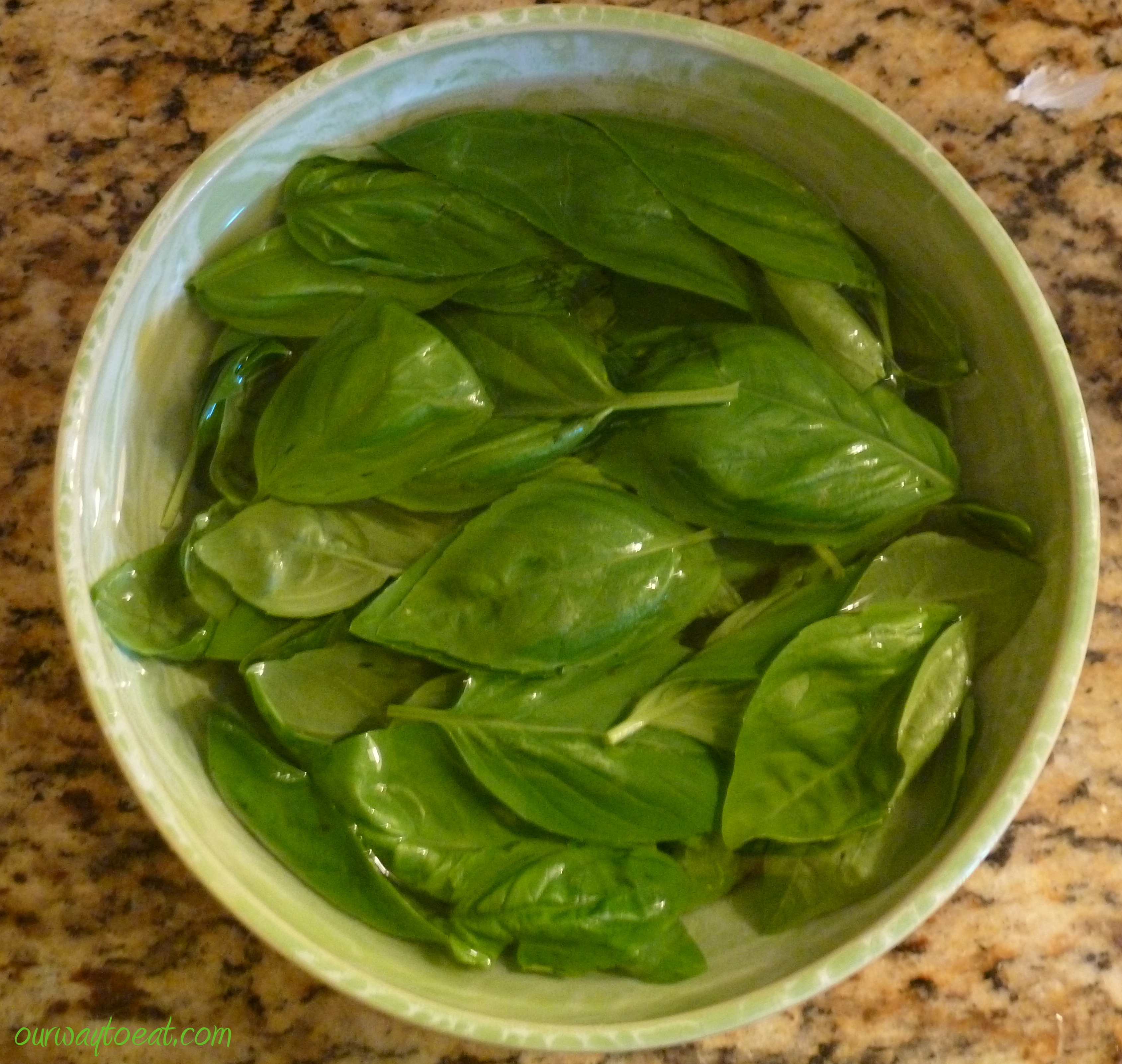 Please refer to my method for making wonderful Basil Pesto and Roasted Tomatoes recipes in the linked posts. It takes an hour to roast tomatoes, so if you haven’t done that in advance, start there first. FYI, Noodles and Co. doesn’t use roasted tomatoes, so roasting the tomatoes is optional for this recipe. I think roasting the tomatoes is worth the effort. Shriveled, roasted tomatoes make their presence known in the dish with a sweet, concentrated tomato flavor. They also contain less liquid to dilute the basil-y, Parmesan cheese-y, garlic-y goodness of the pesto. If you’d rather, you can simply add grape tomatoes to the sauté pan (more on that in a minute), and sauté the ripe red beauties until they are softened and bursting, and adjust the amount of pasta water you use to thin the pesto to avoid having a runny sauce.
Please refer to my method for making wonderful Basil Pesto and Roasted Tomatoes recipes in the linked posts. It takes an hour to roast tomatoes, so if you haven’t done that in advance, start there first. FYI, Noodles and Co. doesn’t use roasted tomatoes, so roasting the tomatoes is optional for this recipe. I think roasting the tomatoes is worth the effort. Shriveled, roasted tomatoes make their presence known in the dish with a sweet, concentrated tomato flavor. They also contain less liquid to dilute the basil-y, Parmesan cheese-y, garlic-y goodness of the pesto. If you’d rather, you can simply add grape tomatoes to the sauté pan (more on that in a minute), and sauté the ripe red beauties until they are softened and bursting, and adjust the amount of pasta water you use to thin the pesto to avoid having a runny sauce. 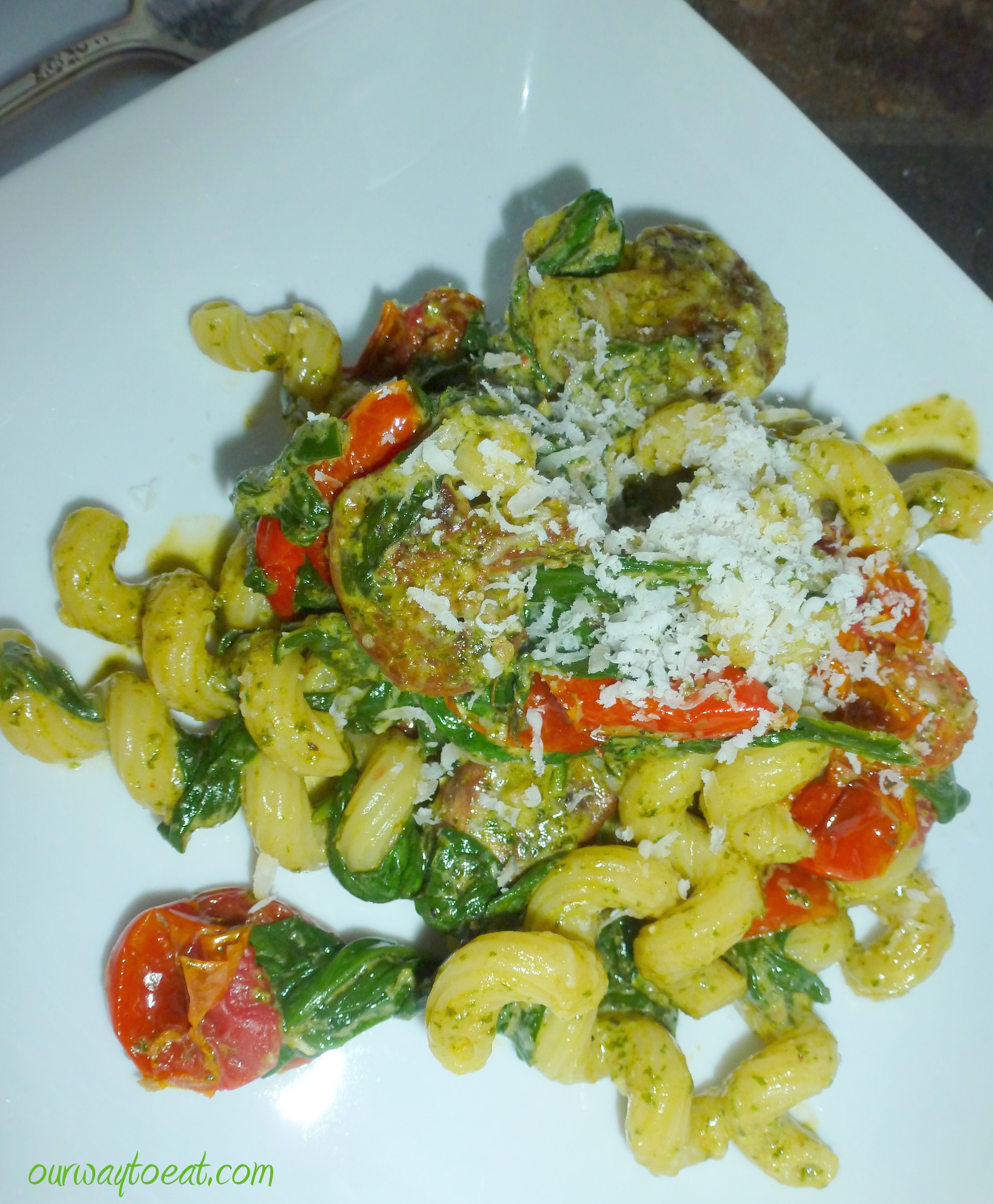 Pesto Cavatappi in the style of Noodles and Company — 1 hour total time, 30 minutes active time, serves 4 — easily doubled.
Pesto Cavatappi in the style of Noodles and Company — 1 hour total time, 30 minutes active time, serves 4 — easily doubled.
Once you have made basil pesto and roasted tomatoes, the recipe is very simple and comes together quickly. Cook half a box of curly cavatappi noodles in salted water according to the package directions to a little less than done. At the same time, mince and sauté two cloves of garlic and 8 ounces of sliced, clean, button or cremini mushrooms in a little olive oil. If you are not using roasted tomatoes, you can add a few handfuls of grape tomatoes during this step. I think a minced, sautéed shallot would also fit the flavor profile. Once the veggies are mostly cooked, you can add a splash of white wine to the hot pan to develop flavor and get all of the good cooked bits off the pan–I didn’t bother with this, even though the official Noodles and Co. Cavatappi claims to contain white wine. Its presence or absence is not noteworthy. When the noodles are nearly cooked, drain them, reserving some pasta water. Next, toss the noodles, pesto and sautéed veggies together in the sauté pan, and stir gently. If you are using roasted tomatoes, they should be added at this point. I also added two big handfuls of baby spinach, which is not in the Noodles version of this dish, but is a tasty, healthful addition to this meal. I added a little of the pasta water to thin the pesto and to allow the Parmesan cheese in the pesto to melt. When everything is covered in a light coating of green and the spinach has begun to wilt, add a touch of milk, half and half or cream and stir until incorporated. 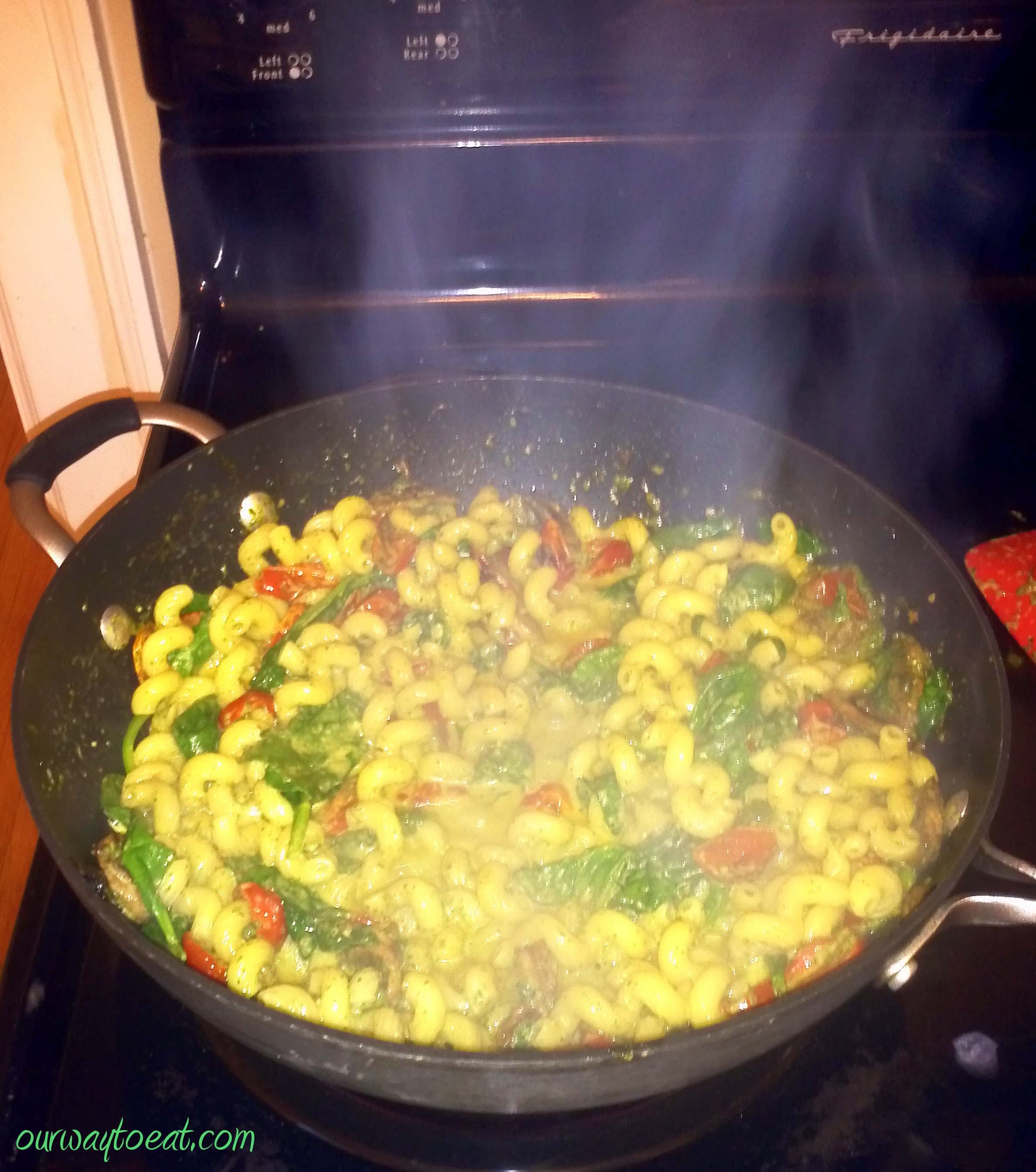
I served my pesto cavatappi topped with a little grated Parmesan cheese.
To really bring the Noodles and Company flavor home, you can also sprinkle on a little chopped Italian flat leafed parsley. I did not. There is so much flavor in the verdant pesto, and the sweet tomatoes which are roasted with garlic and thyme and layers of garlic flavour from each component of this dish I didn’t think more herbs were needed. To truly capture the Noodles and Company Pesto Cavatappi, add a little parsley, finely chopped.
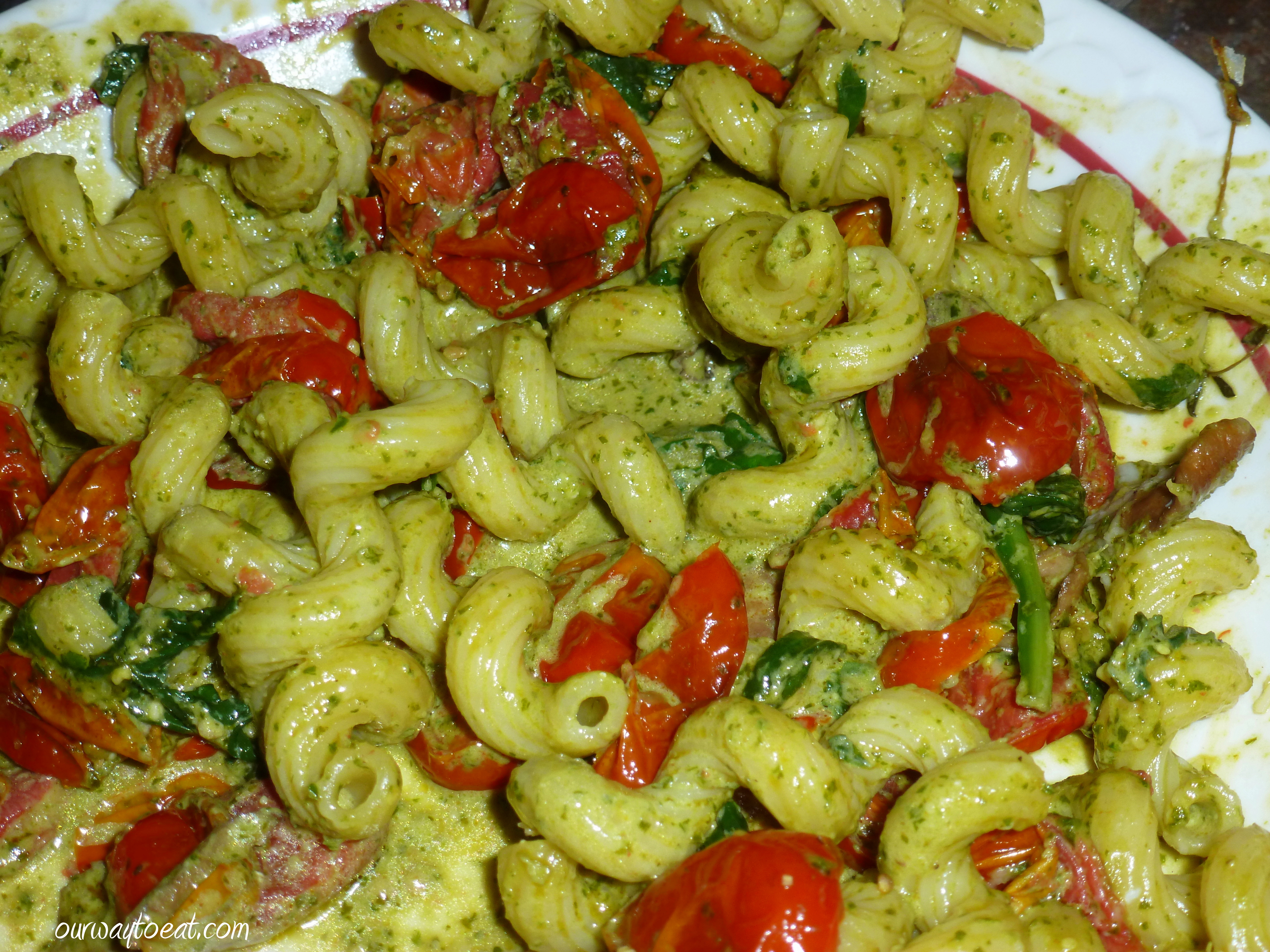 While making this meal I realized that having luscious pasta available as fast food can be bad for your health. As much as I enjoy Noodles and Co. now and then, I know what makes it taste so good: olive oil, cheese and cream, [or half & half or milk if you use my recipe]. That stuff should be reserved for extra special meals. I think it is wonderful pasta to enjoy occasionally. Just don’t start going to Noodles and Company, ordering Pesto Cavatappi and thinking that’s everyday food unless you are an Olympic swimmer, marathoner, or someone else with extreme calorie needs. This recipe is fit for a special meal, or if it is just an average Tuesday, served in a smaller portion alongside a salad. Our Pesto Cavatappi was really tasty, and even with my tweaks to the ingredient list it was a lot like Noodles and Company, but better, because it was lovingly made at home.
While making this meal I realized that having luscious pasta available as fast food can be bad for your health. As much as I enjoy Noodles and Co. now and then, I know what makes it taste so good: olive oil, cheese and cream, [or half & half or milk if you use my recipe]. That stuff should be reserved for extra special meals. I think it is wonderful pasta to enjoy occasionally. Just don’t start going to Noodles and Company, ordering Pesto Cavatappi and thinking that’s everyday food unless you are an Olympic swimmer, marathoner, or someone else with extreme calorie needs. This recipe is fit for a special meal, or if it is just an average Tuesday, served in a smaller portion alongside a salad. Our Pesto Cavatappi was really tasty, and even with my tweaks to the ingredient list it was a lot like Noodles and Company, but better, because it was lovingly made at home.
*Alright, I’ll be straight. I asked Anthony Bordain a question in a Q&A session when he was in Minneapolis on a speaking tour. My question was about the John Spencer Blues Explosion song which is the theme song to his show on the Travel Channel. He kind of blew off the question and failed to answer which I’ve interpreted in several ways that all cast doubt on his self-proclaimed interest in awesome music.

